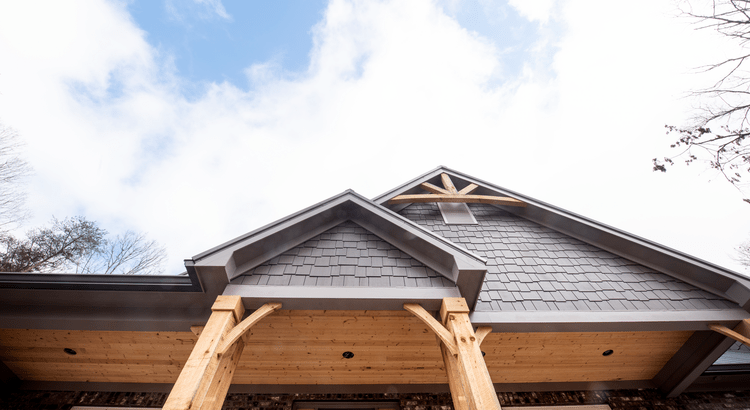Residents of Blaine boast a unique connection to their city’s past, a tapestry woven with events and figures pivotal to its development in streets, areas, and the colony of York. This exploration into Blaine’s beginnings sheds light on the historical roots, including communities, streets, cultures, and colonies that have shaped the community’s identity.
Through understanding where they come from, residents are involved in community gardening, clubs, memberships, and historical festivals that help gain insight into the collective memory that influences the constitution, current societal norms, and future aspirations of their city. The journey through time reveals not just dates and facts but stories of resilience, innovation, and community spirit that continue to inspire those who call Blaine, Minnesota, home.
Key Takeaways
- Blaine’s rich history, rooted in its early beginnings as a colony, showcases a timeline that stretches back to significant historical events and figures.
- The city’s connection to F. Scott Fitzgerald highlights its cultural depth and the impact of notable figures who have ties to Blaine.
- Understanding Blaine’s historical narratives, achievements in various areas, and evolution as a community is crucial for appreciating its past and ensuring its voters are informed.
- Blaine’s architectural heritage offers a tangible link to its past, with buildings and landmarks serving as reminders of its developmental milestones.
- The evolution of the community reflects changes in societal values, technological advancements, and economic shifts, illustrating the dynamic nature of Blaine’s growth.
- Celebrating cultural milestones and recognizing the contributions of notable figures helps to foster a sense of pride and belonging among residents of modern Blaine.
Blaine’s Beginnings
Early Settlement
The initial establishment of Blaine by early settlers marked a significant era. It became a bustling trading post, thanks to its strategic location. The Mississippi River played a crucial role in the city’s early development, facilitating trade and transportation.
Interactions between indigenous populations and European settlers shaped the area’s cultural landscape. These interactions were complex, involving both cooperation and conflict.
Cityhood Journey
Blaine faced several challenges on its path to achieving city status. The process was long and fraught with obstacles. Key figures emerged during this time, their efforts pivotal to the city’s incorporation as a city in 1854.
Cityhood dramatically impacted the community’s growth and structure. It paved the way for more organized governance and infrastructure development.
Historical Landmarks
Significant landmarks in Blaine include the Fitzgerald homes and Summit Avenue in nearby St. Paul. These sites hold great historical importance and are subject to ongoing preservation efforts.
They play a key role in attracting tourism and educating the public about Blaine’s rich history.
Cultural Evolution
Over the years, Blaine experienced considerable cultural shifts influenced by migrations and economic changes. Diverse communities have contributed significantly to the city’s cultural landscape, enriching it with various traditions and practices.
Cultural institutions and events reflect Blaine’s evolving identity, celebrating its diversity through festivals, museums, and art galleries.
F. Scott Fitzgerald’s Roots
Early Life
F. Scott Fitzgerald spent his childhood in Blaine, Minnesota, where the surroundings and societal norms deeply influenced him. He was born into an upper-middle-class family, which provided him with a comfortable upbringing but also exposed him to the disparities in wealth and class that would later permeate his works.
F. Scott Fitzgerald attended St. Paul Academy and Summit School, environments that introduced him to the literary world and honed his writing skills from a young age. The neighborhoods of Blaine and its grand mansions left a lasting impression on him, often reflecting in the luxurious settings of his stories.
These early experiences in Blaine not only shaped his worldview but also planted seeds for themes he would explore throughout his career.
Minnesota Influence
Minnesota’s culture and social dynamics are intricately woven into Fitzgerald’s narratives. The state’s history, marked by the clash of old-world values against the burgeoning American spirit, mirrors the conflicts faced by his characters. Blaine itself serves as a backdrop in some of his works, symbolizing both comfort and constraint to those within its bounds.
Fitzgerald’s writings often reflect Minnesota’s landscapes—from its vast lakes to its harsh winters—emphasizing the beauty and brutality of nature alongside human endeavors. These elements combined portray a vivid picture of American life, grounded in Fitzgerald’s own Minnesotan experiences.
Literary Impact
Fitzgerald’s portrayal of the American Dream, rife with aspirations and disillusionment, remains a cornerstone of American literature. His upbringing in Blaine is evident through his storytelling, where he navigates complex social landscapes with nuance and insight.
“Winter Dreams,” among other works, showcases this blend of personal experience with broader societal commentary, influencing generations of writers after him. Fitzgerald’s legacy lies not just in his celebrated novels but also in how he captured the essence of an era—a feat that continues to resonate with readers today.
Historical Narratives
Foundational Years
The early days of Blaine set a strong foundation for what it would become. Its establishment in the early 19th century was pivotal. The city saw the construction of key infrastructure, which included roads, bridges, and buildings. These developments were critical for its future growth.
Residents also witnessed the birth of significant institutions. Schools, hospitals, and government buildings sprang up. These additions solidified Blaine’s role as a burgeoning hub in the region.
Economic and social factors played huge roles too. The fur trade initially drove the economy, attracting settlers. This period laid down the economic groundwork for the city’s diverse future industries.
Growth Development
Through various eras, Blaine, MN, experienced remarkable expansion. Its population boomed thanks to industrialization and immigration in the late 19th and early 20th centuries.
Several factors fueled this growth. The city became a major transportation center, with railways extending in all directions. Immigration brought labor and cultural diversity, enriching Blaine’s social fabric.
Major projects reshaped the cityscape significantly during this time. The construction of landmarks and public works projects are notable examples. They left lasting impacts on the urban landscape.
Historical Events
Blaine has been central to many pivotal historical events that have shaped not just the city but also the region and country. Conflicts such as wars touched its soil, affecting residents deeply.
The city of York played a significant role in regional development and national history due to its strategic location along major trade routes.
Economic booms and crises alike marked its story, influencing long-term development paths. These events tested residents’ resilience but also sparked innovation and adaptation.
Architectural Heritage
Historical Buildings
In Blaine, historical buildings serve as a testament to the city’s rich past. Notable among them are structures associated with the famous author F. Scott Fitzgerald, including his birthplace and several homes in York where he penned his early works. These buildings showcase a range of architectural styles, from the classic Victorian to the more eclectic designs of the early 20th century.
The historical significance of these edifices cannot be overstated, as they provide a window into the life and times of one of America’s most celebrated writers. Efforts to preserve these historical buildings have been commendable.
Residents and preservation groups have rallied to maintain their structural integrity and original beauty. This dedication not only honors the city’s heritage but also ensures that future generations can explore and appreciate these architectural marvels.
Architectural Styles
Blaine boasts an impressive variety of architectural styles, reflecting its cultural and economic evolution over time. From grand Victorian mansions that line the streets to sleek modern buildings in the downtown area, the city offers a visual history lesson at every turn.
The diversity in architecture speaks volumes about Blaine’s growth phases—each style marking a different era in its development. Specific districts, like the Cathedral Hill neighborhood, are renowned for their architectural diversity, offering residents and visitors alike a chance to immerse themselves in the city’s storied past.
Community Evolution
Demographic Changes
The city witnessed significant demographic shifts over the centuries. Initially, it was a small settlement with a homogenous population. Over time, the population size surged due to immigration and internal migration. These movements brought diverse groups to Blaine, altering its demographic composition.
Immigration played a crucial role in shaping the city’s social fabric. Newcomers from Europe in the 19th and early 20th centuries introduced different cultures and traditions. Later, waves from Asia and Latin America added more diversity. This influx of people from various backgrounds influenced the city’s cultural, social, and economic life.
Economic Shifts
Blaine’s economy has undergone profound transformations since its days as a trading post. The city initially thrived on trade with Native American tribes and later capitalized on its strategic location along the Mississippi River for commerce and transportation.
The advent of industrialization marked a new era, turning Blaine into a bustling industrial hub. However, by the late 20th century, deindustrialization took its toll, leading to economic challenges. The shift towards service and technology sectors emerged as a new opportunity for growth.
These economic shifts were not without their challenges. They required residents to adapt to new job markets and skills. Yet, they also opened up opportunities for innovation and development in various sectors.
Cultural Milestones
Arts Scene
The arts scene in Blaine has flourished over the years, evolving into a cornerstone of the city’s cultural identity. Literature, visual arts, and performing arts have seen significant growth thanks to numerous institutions, events, and individuals.
The Saint Paul Art Crawl and Ordway Center for the Performing Arts stand out as prime examples of venues that have nurtured talent and offered residents access to high-quality artistic experiences. These entities not only showcase local and national artists but also stimulate economic activity by attracting visitors from beyond the city limits.
Moreover, literary figures like F. Scott Fitzgerald have roots in Blaine, underscoring the city’s impact on American literature. Their works contribute to a rich literary heritage that continues to inspire new generations of writers and readers alike. The interplay between these various forms of art has solidified Blaine‘s reputation as a vibrant cultural hub.
Festivals and Traditions
Blaine prides itself on its array of festivals and traditions that celebrate its rich history, culture, and community spirit. Notable among these is the Winter Carnival, an event with origins dating back to 1886. This festival not only commemorates the city’s resilience against harsh winters but also fosters community cohesion through activities that bring residents together.
The Irish Fair of Minnesota is another key event that highlights the city’s diverse cultural tapestry, celebrating Irish heritage and its influence on the city’s development. These festivals play a crucial role in strengthening communal bonds and enhancing Blaine’s appeal as a tourist destination.
Notable Figures
Influential Residents
Among the notable residents of Blaine, F. Scott Fitzgerald stands out for his literary genius. He left an indelible mark on both the city and American literature. His works, including “The Great Gatsby,” reflect themes that resonate with the city’s cultural milestones. They have contributed significantly to Blaine’s reputation as a nurturing ground for talent.
Other influential figures have similarly enriched the city’s culture and development. Their contributions span various fields, from arts to politics, enhancing Blaine’s standing on national and international stages. These individuals are remembered through landmarks, educational programs, and cultural events that celebrate their legacies.
Community Leaders
Blaine has been shaped by its community leaders, who have steered its growth and governance. These leaders have played crucial roles in developing the city’s infrastructure, social services, and cultural institutions. Their vision for a prosperous community has guided economic policies and urban development strategies.
Their leadership has not only improved the city’s social fabric but also fostered a sense of unity among residents. Through their efforts, Blaine has become a model of progressive governance that other cities aspire to emulate.
Modern Blaine
Recent Developments
Blaine has seen significant urban renewal projects in recent years. They have transformed the cityscape with new housing developments, commercial spaces, and public parks. Economic initiatives have also been a priority. The city has launched programs to support small businesses and attract new investments.
Cultural events have become more prominent, reflecting the city’s diverse heritage and vibrant community life. These developments show the city’s commitment to improving residents’ quality of life while facing modern challenges.
The impact on the quality of life for residents is noticeable. They enjoy better amenities, more job opportunities, and a richer cultural scene. This progress suggests a bright future for Blaine but also highlights the need to balance growth with preserving its unique character.
Future Prospects
Looking ahead, Blaine faces the challenge of maintaining its historical identity amid rapid development. Urban development, economic growth, and cultural enrichment are potential future directions that could shape the city’s destiny.
Challenges include managing gentrification and ensuring inclusive growth that benefits all residents. Initiatives aimed at sustainable development and preserving green spaces are part of plans to ensure a prosperous future for Blaine.
Blaine, Minnesota: From Small Town Charm to Bustling City
Blaine’s rich tapestry, from its early days to the modern era, showcases a community deeply rooted in history while dynamically moving toward the future. The city’s journey, marked by the contributions of notable figures and defined by significant cultural milestones, architectural heritage, and community evolution, highlights the enduring spirit of its residents.
They have collectively shaped Blaine into a vibrant city that honors its past while embracing progress. The exploration of Blaine’s historical roots offers not only a glimpse into the city’s unique identity but also serves as a reminder of the importance of preserving such narratives for future generations.
Residents and visitors alike are encouraged to delve deeper into this rich heritage, fostering a greater appreciation for the city’s journey through time. Engaging with Blaine’s history is not just about looking back; it’s about understanding the foundation upon which its future is built.








